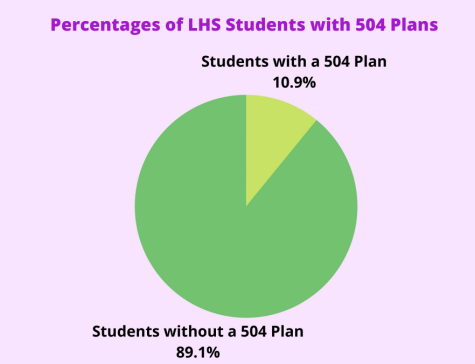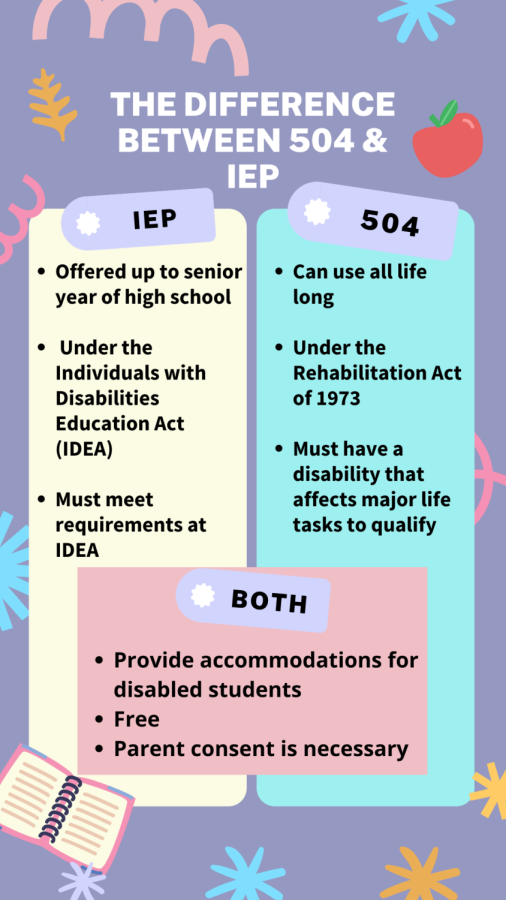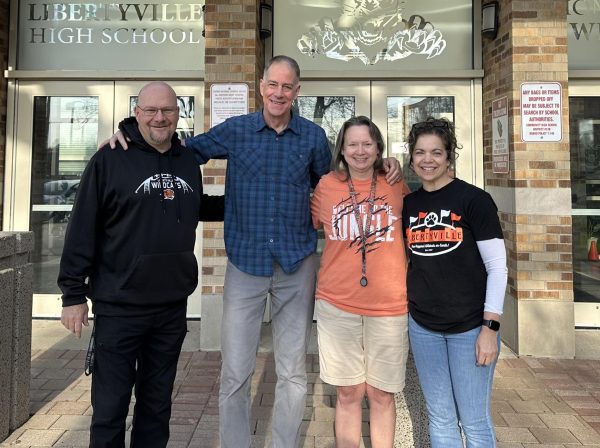504 Plans: Creating an equitable school environment
DARING. If you are a student at LHS, chances are, you’ve heard or seen that word at least once this week. It is well known that DARING represents the qualities that D128 strives to develop in its students: Being a dreamer and doer, being aware, resilient, inquisitive, nimble and global.
We all have different starting points and roadblocks and need opportunities to develop these skills. And so parallel to its DARING mission, LHS provides support to students with physical and or mental impairments to create an equitable school environment. This support comes in the form of 504 plans and Individualized Learning Plans (IEPs).
Approximately 11 percent of students at LHS have a 504 plan, according to special needs specialist and school psychologist Mrs. Claire DiBella. Despite the fact many students are impacted by 504s and IEPs, many students have no idea these plans exist, much less what they are.
504 plans come from Section 504 of the Rehabilitation Act of 1973, a federal civil rights law that protects against discrimination of students grades K-12 with a “physical or mental impairment” that interferes with school. These impairments include any physiological disorder or condition, as well as any mental or physical disorder. The law deems that those students have the right to federally funded programs and activities.
Additionally, through the Individuals with Disabilities Act (IDEA), some students are eligible for Individualized Education Plans (IEPs) under the 13 different eligibilities outlined in IDEA.
“The main difference when you’re looking at eligibility between IEP and 504 is; does [a student] need specialized instruction and related services in order to remediate a deficit that’s adversely impacting them, or do they just need accommodations in order to level the playing field?” Special Education co-supervisor Mrs. Alyssa Henning said.
The first point of contact in creating 504 plans is between a student’s Learning Support Team (LST) and the students and their families. The LSTs, teachers, families and students work together on different levels of intervention in order to support the student. LST counselors case-manage the 504 plans with the assistance of Mrs. DiBella. Mrs. DiBella believes the roles of the counselors and LSTs are vital in this process.
“It all starts with those conversations back at the LST and working with the teachers and family to figure out what needs to be addressed,” Mrs. DiBella said.
Once a student has been deemed eligible, the LSTs and Mrs. DiBella work towards creating a specific list of accommodations for the student. These accommodations are individualized to the student– even two students with the same impairments will probably not have the same plan.
“We are prescriptive in terms of the accommodations,” DiBella said. “It’s based on data that we receive from a wide variety of sources – to determine what areas a student needs accommodations for in an individualized way.” Sources can include outside evaluations, teacher feedback, test data from standardized testing, student interviews and medical reports.
These accommodations eventually become a 504 plan that is shared with the student’s teachers. The 504 plan is not rigid, however. As a student develops, their plan also evolves. A student who has a 504 plan in middle school, for example, may transition into additional or different accommodations as they enter high school.

Teachers are given a copy of the 504 plan with agreed upon accommodations, and they have different practices within their own classroom to meet the accommodations set forth.
“I feel like the teachers have to be very open minded and also flexible at the same time,” an anonymous student said. “My teachers have been really good about that. Like ‘alright, you need extra time. Just turn it in once you get home… So the teachers do an amazing job in my opinion.”
Even though a list of accommodations is provided for students with 504 plans, that does not necessarily entail that a student must use all of them every day.
An anonymous student at LHS with ADHD has a 504 plan that lists accommodations that include graphic organizers for classes, sitting in the front of the classroom, and testing in a different room. However, the student utilizes some accommodations more than others based on how they are feeling and the strategies they have learned.
“I barely go into a different room because I’m usually pretty comfortable,” the anonymous student said. “When people start finishing ahead of me, I sometimes do get a little anxious and I do start rushing a little bit. But I have strategies to calm myself down.”
As beneficial as 504 plans are in creating a more equitable learning environment in school, taking the first step and receiving the help one may need can be a difficult task when there is a stigma that exists around students with impairments.
“I always feel like the social pressure is that if you have a 504 you might seem less intelligent than other people,” a second anonymous student said. “And what I realized is that you clearly aren’t. It’s just a different situation.”
Even those who are comfortable with utilizing their 504s feel some hesitancy around sharing that with others.
“People are not usually open about it, because I feel like others think like, ‘Oh, they’re stupid,’” the first anonymous student said. “That makes me so mad. I’m like, ‘Okay, well, it’s not my fault. My brain works differently.’”
Nonetheless, 504 plans effectively provide support for students as they grow in school. As a supervisor and integral part of working with students with disabilities, Mrs. Henning is always moved by how much students develop and learn as they go through high school.
“Working with families in eighth grade and [seeing] how quickly the four years go by, and seeing how much progress a student makes with student growth, confidence, and ability to navigate some of their disabilities or limitations is rewarding,” Mrs. Henning said. “[It’s rewarding] to help level the playing field for them to reach their fullest potential and then see what they do with that next step.”







